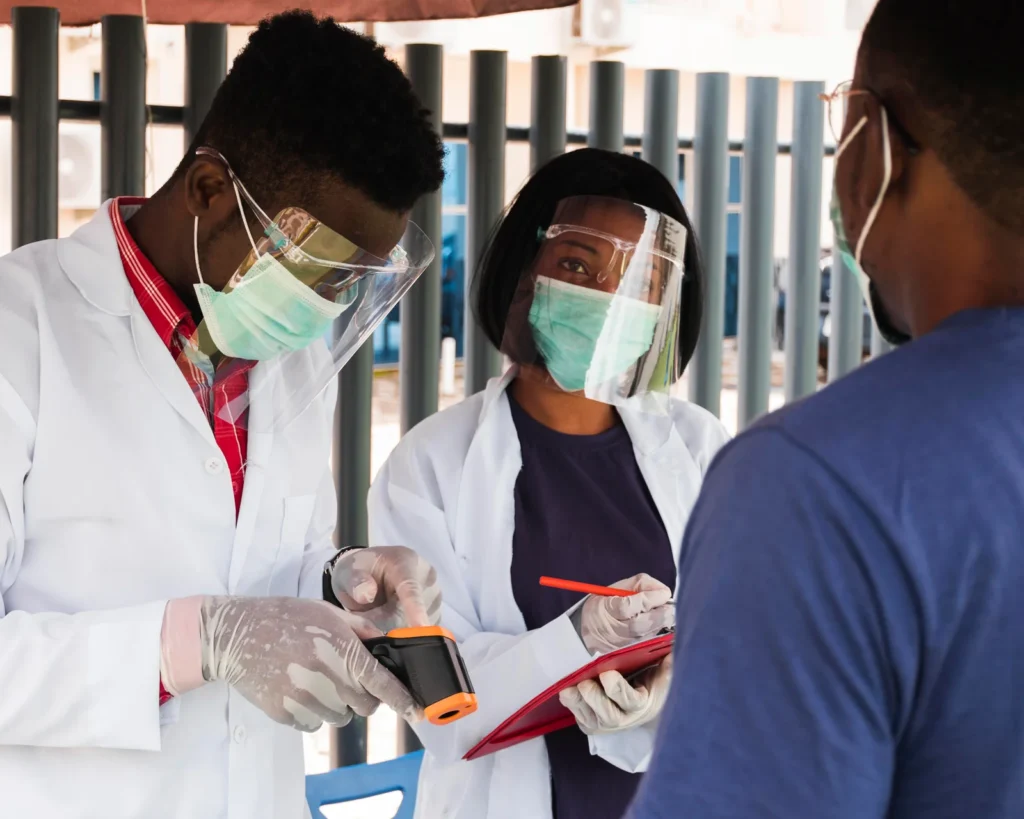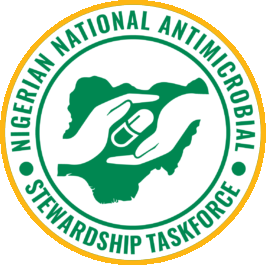
Differing significantly from the dusty North Sahelian desert to the vibrant cities of the South, Nigeria contends with discrete public health issues and challenges. But, out of these multifaceted problems has grown the country’s most powerful organizational defense against outbreak and epidemic—the Nigerian Center for Disease Control and Prevention (NCDC). It was established by the Nigerian Government to prevent the lives of millions of Nigerian citizens and visitors to the country. The NCDC primarily deals with the proactive detection and tracking of highly infectious diseases, while also planning emergency responses, and keeping the population safe and updated of the potential health risks.
This blog post explores the historical facts, purpose, role and responsibilities and the overall impact of NCDC in safeguarding the public health and safety in Nigeria, backed by credible facts, data and real examples.
A Brief History of the NCDC
The Nigerian Center for Disease Control and Prevention was established in 2011 but its roots date to 2007 when it was a department under the Nigerian Federal Ministry of Health. Following the model of the U.S. CDC, Nigeria’s health authorities found it important to be an autonomous and self-directed organization that handles public health emergencies, especially after outbreaks of diseases like Cerebrospinal Meningitis and the global threat of H1N1 influenza.
The NCDC became operational under the supervision of the NCDC Act, which was approved in 2018, providing it with a national level of leadership to respond for communicable diseases, particularly those that bring about emergencies and global outbreaks
Core Mission: Disease Surveillance and Response
The daily operations of the NCDC depend largely on disease surveillance. The agency is the one which updates real-time data systems on potential outbreaks. It has involved Disease Surveillance and Notification Officers (DSNOs) in all 36 states and FCT, working to investigate unusual trend reports, and offering assistance alongside outbreak management at the local level.
Aligned with the Integrated Disease Surveillance and Response (IDSR) program, the NCDC tracks the 41 priority diseases along with the following.
- Lassa Fever
- Yellow Fever
- Measles
- Cholera
- Cerebrospinal Meningitis
For instance, in 2023, NCDC prevented a nationwide health disaster that could have resulted from the outbreak of Cholera and Lassa Fever. The National Center for Disease Control quickly and timely responded to the risk and effectively deployed all the necessary resources to identify and treat 27,000 suspected cases of Cholera and 1,500 confirmed cases of Lassa fever throughout the country.
Responding to Public Health Emergencies
When COVID-19 hit Nigeria in late February 2020, the Nigerian Center for Disease Control and Prevention responded swiftly. With the help of its Public Health Emergency Operations Center (PHEOC), NCDC smartly conducted coordinated testing, contact tracing, risk communication, and nationwide data tracking.
With its public health system anchored on a solid foundation, Nigeria had by 2023 tested more than 5 million people for COVID-19 and led one of Africa’s best-structured pandemic responses. As of now, the COVID-19 Nigeria update today from March 2024, the total number of confirmed Corona Virus cases remained below 270,000 with a remarkable recovery rate of over 97%.
The monkeypox, cholera, and Ebola emergencies have also been managed largely through NCDC’s emergency operations which were reintroduced from neighboring areas.
Infection Prevention and Control Measures
Preventing disease outbreaks in hospitals and public places is another focal point for NCDC. It has successfully carried out national-wide programs on Infection Prevention and Control (IPC), making sure that health workers are highly trained in hygiene protocols, PPE usage, and facility sanitation.
The Nigerian National Antimicrobial Stewardship Taskforce (NNAST) has the tagline ‘NCDC’ and is the one implementing a campaign to stem down on antimicrobial resistance (AMR)—a growing health challenge that has increased in the recent times, where the misuse of antibiotics leads to the malignant and hard-to-treat stage of infectious diseases.
The Regional Offices under the aegis of WHO and CDC Africa provide support for state level IPC teams, particularly in areas badly struck by outbreaks which include Cerebrospinal Meningitis in the Zamfara and Sokoto states.
Combating Communicable Diseases: A National Priority
The fight against communicable diseases is ongoing and challenging, with illnesses like Malaria, Tuberculosis, and many others, but the Nigerian Centre for Disease Control does not surrender on developing the immunization strategies, vector control efforts, and community health education.
In 2022, the NCDC joined hands with local governments to administer millions of vaccines at the measles outbreaks in north Nigeria. Furthermore, it helped mobile health teams to access even highly remote regions and distribute medical services, thus strengthening the primary health care system in Nigeria.
Such community-led initiatives clarify that disease management is not just about scientific progress; it entails exposure, confidence, trust, building relationships and advancing localized actions.
The Role of Research and Laboratory Networks
Research and laboratory networks are at the core of NCDC’s operations. It has a very strong network of laboratories and research centers which mainly include the National Reference Laboratory in Abuja and regional laboratories in Yaba, Enugu, and Kano. These laboratories mainly focused at:
- PCR Testing.
- Genomic Sequencing.
- Rapid Antigen Diagnostics.
These laboratories played a vital role during the COVID-19 pandemic and are still crucial for the detection of infectious diseases in Nigeria. Data collected from surveillance-based research in early 2023 unveiled a new strain of Lassa virus that never identified before in the Plateau State which contributed to the development of new treatment protocols.
Collaboration: The Power of Partnerships
The NCDC has strong partnerships with WHO, Africa CDC, and U.S. CDC. Also, it plays a prominent local role in Nigerian National Antimicrobial Stewardship Taskforce (NNAST) coordination which aims to improve antibiotic use, infection prevention measures, practices and public awareness in hospitals.
All these partnerships have borne fruit, with Nigeria recording remarkably shorter times for outbreak responses and better vaccine deliveries.
The NCDC plays an active role in global discussions on disease intelligence, which helps to set parameters for cross-border surveillance and biosecurity policies
Public Communication and Digital Outreach
In the modern world of advanced technology and super-speed information, the NCDC has remained focused on delivering timely, transparent updates. During COVID-19 it was the daily situation reports, social media alerts, and televised briefings that helped to block misinformation that helped calm the public while directing them to take proper actions without panicking.
The Covid-19 Nigeria update today is still available on the official NCDC website and their official X (formerly Twitter) account, which provide daily reports on cases, fatalities, and vaccination rates.
We all know that ‘Knowledge is power’. Hence, by empowering citizens through information, the NCDC fosters a culture of self-regulation and readiness.
Future Goals for Public Health in Nigeria
Although NCDC has made great progress, it still faces many challenges, such as the inadequately funded state health systems and the increasing number of zoonotic or highly infectious diseases. Nonetheless, over the next decade, the agency hopes to achieve the following goals.
- Integrate better and more advanced real-time disease tracking tools.
- Expand the genomic surveillance capacity.
- Strengthening its IPC programs, especially in the remote areas and rural facilities.
- Hire and train more frontline public health workers.
The Nigerian Center for Disease Control and Prevention has proven to be a cornerstone of public health in the nation. Its development reflects the transformation of public health in Nigeria in terms of management, communication, and protection.
Final Thoughts
The Nigerian Center for Disease Control and Prevention stands for much more than just being an agency; it is a solid promise, offered to the 220 million people in Nigeria, that their illnesses and health problems will be overcome with science, good management, and compassion. Concentrating on disease surveillance, being ready for emergencies, preventing and controlling infections through public engagement, NCDC is therefore the leader in changing the state of health in Nigeria.
Being with local people and international partners, the NCDC is not only responding to the immediate health issues today but is also laying the groundwork by reforming and restructuring for the future.
FAQs
What is the Nigerian Center for Disease Control and Prevention?
NCDC is the Nigeria’s national public health agency that is responsible for detecting preventing and responding to diseases and health threats across the country.
How does the NCDC conduct disease surveillance?
It uses the Integrated Disease Surveillance and Response (IDSR) framework with field officers reporting from all 36 states and the FCT. Data is reviewed in real-time.
What role did the NCDC play in COVID-19 response?
The NCDC led testing, tracing, and public awareness during the pandemic. It activated emergency centers and provided daily updates and national strategies.
What are some major diseases monitored by the NCDC?
They include cholera, Lassa fever, measles, yellow fever, monkeypox, and cerebrospinal meningitis.
What is NNAST and how does it relate to the NCDC?
The Nigerian National Antimicrobial Stewardship Taskforce (NNAST) works with the NCDC to combat antimicrobial resistance through better antibiotic use and infection prevention.


